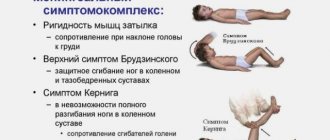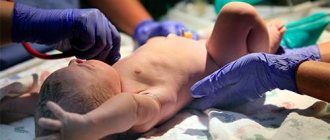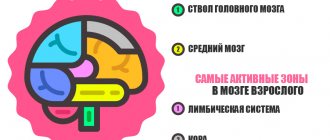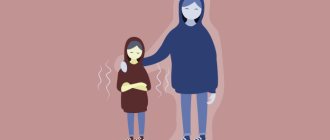Recently, there have been frequent references in the press to outbreaks of meningitis that claim the lives of children and adults. Is there really a threat of an epidemic? And how to protect yourself and your children from this disease? Our expert is a pediatrician, infectious disease specialist at the Federal State Budgetary Educational Institution of Higher Education Russian National Research Medical University named after N. I. Pirogov of the Ministry of Health of the Russian Federation, Morozov Children's City Clinical Hospital, Chief Specialist in Infectious Diseases in Children in the Central Administrative District of Moscow, Candidate of Medical Sciences Alexey Rtishchev .
Meningitis (inflammation of the membranes of the brain) is an extremely dangerous disease. According to WHO estimates, up to 50% of patients die without treatment, and serious complications occur in more than 10% of cases. Alas, even timely medical care does not always guarantee a successful outcome. In 70% of cases, children suffer from this disease (the smaller the child, the more severe the meningitis and the worse the prognosis).
Virus, fungus or bacteria?
There are many pathogens for meningitis. For example, it can be caused by viruses. In summer, meningitis occurs more often, caused by an enterovirus, which enters the body from dirty hands or through water. Secondary meningitis caused by influenza or mumps viruses may also occur. Less commonly, the disease is caused by a fungal infection. It is impossible to distinguish the causative agent of the disease by eye - this requires laboratory analysis of the cerebrospinal fluid.
Viral meningitis is often not as dangerous as bacterial meningitis. The latter are caused by meningococci, as well as pneumococci and Haemophilus influenzae type B.
Click to enlarge
A period of imaginary prosperity
The last rise in meningococcal infection was observed in 2003–2004. There were at least twice as many cases of the disease then as there are today. The surge in infection led to the formation of an “immune layer”, thanks to which people began to get sick less often. But last year there was an increase in the incidence of meningitis by more than 13%.
It is quite easy to get this infection. This can happen through the usual airborne route, but only with close contact with the source of infection. Even children who do not attend kindergartens are not insured. The fact is that some people (usually adults) are only carriers of dangerous bacteria, while they themselves either feel normal or experience only symptoms of a mild acute respiratory infection. Therefore, children often become infected at home from their own parents, brothers or sisters. People at particular risk of contracting meningitis include people living in crowded conditions - first-year students living in dormitories, migrant workers, military recruits, as well as people with a removed spleen and various immunodeficiencies.
Article on the topic
Attack of the mutants. What dangerous diseases await Russians this winter?
Meningitis: Disease Prevention
Vaccination against certain microorganisms that cause meningitis is the most effective way to prevent the disease. In the following cases, meningitis can be prevented with a vaccine against:
- Measles, mumps, rubella viruses. Vaccination against measles, mumps and rubella is a routine vaccination that children receive at the ages of 12–15 months and 4–6 years.
- Chickenpox virus. Vaccination against chickenpox is recommended in two doses, the first dose at 12–15 months and the second at 4–6 years. Older children, teenagers, and adults who have not had chickenpox can also get vaccinated.
- Bacteria Haemophilus influenzae type b (Hib). The Hib vaccine is recommended for all children 2 months to 5 years of age and for children over 5 years of age with underlying health conditions such as sickle cell disease or a weakened immune system.
- Bacteria Neisseria meningitidis and Streptococcus pneumoniae. People with underlying health conditions, such as a weakened immune system or people who have had meningitis in the past, are advised to get vaccinated against these two types of bacteria. The meningococcal vaccine (MCV4) helps the body build protection against infection by certain strains of the bacterium Neisseria meningitidis. The CDC recommends that teenagers and students living in college dormitories get vaccinated. Teenagers undergo this vaccination at the age of 11-12 years. People who have not been vaccinated earlier can also get vaccinated between the ages of 13 and 18. People who are at higher risk of getting meningitis, such as travelers to other countries where there are outbreaks of meningitis, people who have had their spleens removed, and people living with HIV, can also get the vaccine. Routine vaccination with pneumococcal conjugate vaccine (PCV) is recommended for children 2 years of age and younger to prevent infection with the bacterium Streptococcus pneumoniae.
College students
Although the overall risk for college students to develop meningitis due to infection with the bacterium Neisseria meningitidis is low, the risk for newly admitted students living in residence halls is significantly higher than for other people of the same age. The Center for Disease Control and Prevention recommends that students living in dormitories be vaccinated with the meningococcal vaccine (MCV4). College students who do not live in residence halls can also get vaccinated to reduce their risk of infection.
Cochlear implant
A connection has been found between meningitis and a cochlear implant in cases of complete hearing loss. Experts recommend that people with a cochlear implant be vaccinated with pneumococcal conjugate vaccine (PCV) to protect against bacterial meningitis, which can be caused by the bacterium Streptococcus pneumoniae. Also, some people with a cochlear implant had ear infections before they got meningitis, so people with a cochlear implant should receive appropriate antibiotic treatment for ear infections.
Lactation
Breastfeeding can protect babies 2-5 months of age from meningitis caused by the bacterium Haemophilus influenzae type b (Hib) because the mother's immune system is passed on to the baby through milk. Despite this, it is necessary to vaccinate breastfed children with the Hib vaccine.
Reduce risk
Anyone can also take some steps to reduce the risk of infection and prevent meningitis:
- Avoid contact with people with meningitis.
- Separate a family member with meningitis from other family members.
- Wash your hands frequently, especially if you have meningitis or are caring for someone who has meningitis. Wash your hands after using the toilet; a sick child should be helped to wash his hands. The caregiver should wash their hands every time after changing diapers or nappies, especially if the child is sick, or after touching dirty bedding, towels, clothing, or personal belongings of a person with meningitis.
- Avoid contact with insects that may carry microorganisms that cause meningitis, and also do not use objects contaminated with rodent excreta that may contain microorganisms that cause meningitis. If a person lives or visits an area or country where there are insects (such as mosquitoes and ticks) and rodents (such as mice and rats) that can carry the organisms that cause meningitis, steps should be taken to avoid exposure to them. For example, use insect repellents and make sure there are no rodents in the house.
If you have close contact with someone who has bacterial meningitis, taking antibiotics may help prevent illness. For example, if a person has had close contact with saliva or mucus from someone with meningitis caused by the bacterium Neisseria meningitidis, antibiotics such as ciprofloxacin, ceftriaxone, or rifampin will help. But young people under 16 years of age and pregnant women are usually not prescribed ciprofloxacin. Pregnant women are also not recommended to take rifampin.
If a person has had casual contact with someone who has meningitis, for example at school or work, there is no need to take antibiotics.
Caution, heat!
Meningitis does not have any one significant symptom. And the signs of this disease can easily be confused, for example, with the flu. Therefore, with any rise in temperature above 38–39 degrees and a sharp deterioration in the child’s general condition, it is better to immediately consult a doctor. Doctors have several tests that can help suspect meningitis. For example, a dangerous sign is when a child cannot bring his chin to his chest. In this case, the patient must be urgently hospitalized. Many believe that a purple rash on the skin is the main symptom of meningitis. In fact, bright spots on the body, buttocks and other places are a sign of meningococcemia, which can be combined with meningitis, or can occur separately. This rash itself is a sign that the infectious agent has spread through the bloodstream, that is, sepsis has begun. This is a life-threatening situation. Moreover, sometimes not even a day passes from the appearance of the first symptoms to the death of the patient.
Vaccination will protect
It is almost impossible to prevent meningitis using any nonspecific methods of prevention. The only protection against this terrible disease with proven effectiveness is vaccination. There are vaccines against pneumococcus, meningococcus, and hemophilus influenzae. They prevent all major types of bacterial meningitis.
Unfortunately, the National Vaccination Calendar contains a vaccine only against hemophilus influenzae, and then only for a limited number of patients from risk groups. However, nothing prevents parents concerned about the health of their child from contacting a vaccination center on their own. You can get vaccinated starting in infancy. The immunologist will select an individual vaccination regimen that will protect the baby as much as possible. As for immunization against meningococcus, which most often causes meningitis, it is better to choose a conjugate quadrivalent vaccine, which covers 75% of the most common serotypes of meningococcus. Vaccinations against pneumococcus and Haemophilus influenzae are often combined with vaccines against other diseases, which provide immunity to 5-6 infections at once. The cost of vaccination is not that high, especially when compared with the cost of treatment and the losses that the disease can cause.
Important
With meningitis in children 2–5 years old, the temperature rises, the child becomes lethargic, drowsy, complains of a headache, that it hurts to look at the light, and is irritated by loud noises. Vomiting appears, and convulsions are possible in the future. Babies in the first year of life may not have pronounced symptoms, or they are often mistaken for intestinal colic or attributed to teething. The diagnosis can be difficult to make even for specialists. In addition to lethargy and temperature, a change in the nature of crying should be alarming: it becomes unemotional and monotonous. If usually the baby calms down in the mother’s arms, here it’s the opposite: he doesn’t allow himself to be touched. If these symptoms appear, you should immediately consult a doctor. Any delay can lead to an unfavorable outcome.
A terrible threat
Since meningitis can lead to death in a matter of hours, a small patient requires hospitalization as soon as possible. But, alas, even the necessary treatment started on time does not always save, especially if a child under 1 year of age is ill. Meningococcal infection is dangerous and has complications. It thromboses blood vessels, which can cause areas of tissue necrosis (death) in the limbs. Therefore, among the possible consequences is amputation of limbs. Meningitis can also negatively affect many mental functions (memory, for example), and also lead to paralysis and paresis. The infection is fraught with decreased or loss of hearing and vision, the development of epilepsy, decreased intelligence and delayed mental and motor development in children.
Meningitis: how to recognize and how to avoid getting sick. Infographics Read more
Saving injection
There are effective vaccines against meningococcal disease. In Europe, babies are vaccinated against meningitis from the first months of life, in the USA teenagers are vaccinated. Alas, the vaccine against this disease is not yet included in the Russian vaccination calendar, and therefore parents can use it in most cases at their own expense. The vaccine registered in Russia includes the 4 most common pathogens of meningococcal infection - A, C, W and Y. Children are vaccinated with it starting from 9 months. A vaccine against another common meningococcus, group B, is not yet available in Russia. But, since the causative agents of meningitis can be not only meningococci, but also other bacteria, parents should also think about the possibility of vaccinating their children with the vaccine against Haemophilus influenzae (HIB) and the vaccine against pneumococcal infection (the latter was introduced into the National Calendar in 2014). vaccinations).
Article on the topic
Doctors signal SOS. WHO named 12 bacteria resistant to antibiotics
How to avoid getting meningitis: precautions
Seven cases of serous meningitis in children have been registered in the capital. Parents are sounding the alarm and fear the outbreak of an epidemic. Why meningitis is dangerous and how to avoid the disease - in the material M24.ru.
Meningitis is an inflammation of the lining of the brain and spinal cord. In this disease, brain cells are not damaged, and the foci of inflammation are located outside - on the membranes of the brain matter. However, meningitis is perhaps even more dangerous than encephalitis - the mortality rate for this disease is very high, and in addition, children most often suffer from meningitis during epidemic outbreaks.
Types of meningitis and its danger
Despite the common name “meningitis,” several completely different types of disease are hidden under it. Meningitis can be purulent, serous and tuberculous.
The first form includes meningitis, as a result of which pus forms on the membranes of the brain, and with serous meningitis, the membranes of the brain are impregnated with serous-fibrinous (protein) exudate. As for tuberculous meningitis, it occurs in patients with tuberculosis against the background of an underlying disease. If the latter type of meningitis is not treated, it always leads to the death of the patient.
Photo: ITAR-TASS
In general, purulent meningitis is more dangerous than serous meningitis, develops faster and leads to more severe consequences if the disease is not diagnosed in a timely manner.
Meningitis may not be an independent disease, but may develop as a complication of some other disease. This happens especially often with pneumonia, otitis, frontal sinuses and inflammation of the paranasal sinuses. Therefore, you should take even a common runny nose seriously and not leave it untreated - this will not lead to anything good.
Children can get meningitis during epidemic outbreaks of the disease, which most often occur in the spring and early summer. Moreover, this applies to both purulent and serous meningitis.
The disease (with the exception of the tuberculosis form) develops acutely: the temperature rises to 40-41 degrees within a few hours, the patient suffers from vomiting, and the most important symptom of meningitis is headache. With meningitis it is unbearable. Often a rash appears on the patient’s skin, and sometimes convulsions develop.
At the first suspicion of meningitis, you should immediately call an ambulance: there is a high risk of death for the patient.
Photo: ITAR-TASS
How to distinguish meningitis from other diseases
Meningitis is also insidious in that it is often confused with other diseases, usually less severe. A particularly common mistake parents make is to confuse meningitis with the flu. It really does resemble the flu when it is severe, but there are differences.
Firstly, vomiting during meningitis is not associated with food intake, but is the body’s reaction to increased intracranial pressure (as a result of inflammation of the meninges). Secondly, headaches of the same severity as with meningitis do not happen with the flu.
A patient with meningitis, as a rule, lies in a special position on his back: his legs are pulled up to his stomach and his head is thrown back. This is due to numbness of the occipital muscles - the patient simply cannot tilt his head to his chest.
It is useless to give a child with meningitis the antipyretics so beloved by parents - they will not lead to any positive effect. There are also no traditional medicines for this disease; the only way is to immediately call doctors. Meningitis is treated with antibiotics and a spinal tap in a hospital setting.
With meningitis, minutes count—untimely detected meningitis can lead to complications (blindness, deafness, loss of coordination, epilepsy) or death. Therefore, you cannot delay contacting doctors even for a minute.
Photo: ITAR-TASS
How to protect yourself from meningitis
In the case of a disease such as meningitis, there is no universal remedy that would help get rid of all fears. But there are a number of recommendations that reduce the risk of disease to a minimum.
Firstly, children should go for walks more often, and the premises should be ventilated more often. The causative agent of the disease is very sensitive to low temperatures and dies quickly. Secondly, you should not take children to places with excessive crowds of people - one of them may be a carrier of meningitis (and there are quite a lot of such people - many do not develop meningitis even after the pathogen enters the body).
Related links
- Seven children were hospitalized in Moscow with suspected meningitis
- A criminal case has been opened in Pushkino regarding the death of a child from meningitis.
Thirdly, you need to vaccinate your child. Here it is necessary to make a reservation; the causative agent of meningitis is not only meningococci, but also streptococci, pneumococci and other types of viruses. Therefore, no vaccine will give a 100% guarantee that the child will not get sick. But it will help reduce the risk of developing the disease.
Fourthly, you should pay attention to such a symptom as a runny nose. Very often, meningitis begins with a runny nose and pharyngitis (inflammation of the back of the throat).
But wearing a hat, contrary to the popular stereotype (and who in childhood was not told “Put on a hat, it’s cold, you’ll get meningitis”?), has no significance for the development of infection.
Vasily Makagonov
Subject: Themes
Our information
Meningococcal group A vaccine, dry polysaccharide (Russia), from 700 rub. Allows protection against meningococci serotypes A and C. Allowed for use from 1 year, after 3 years revaccination is required.
Meningo A + C (France), from 1500 rub. Prevents the development of cerebrospinal meningitis. For adults and children over 2 years old.
Mencevax ACWY (Belgium), from RUB 4,000. Protects against serogroups A, C, W, Y. For children from 2 years of age and adults.
Menactra (USA), from RUB 4,000. Protects against the causative agent of meningococcal infection from serogroups A, C, Y and W‑135. Used in children over 9 months. and adults under 55 years of age. At the age of 9 months to 2 years, the vaccine is given twice with an interval of 3 months, and after 2 years - once.
According to the order of the Ministry of Health, free vaccination against meningococcal infection is carried out only for epidemic indications.










